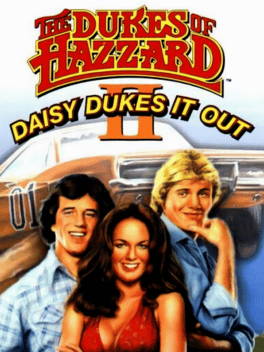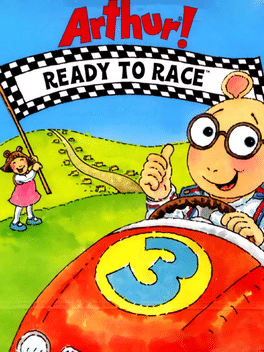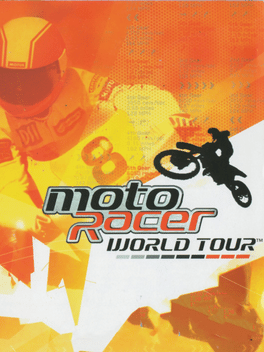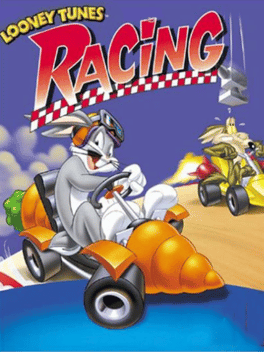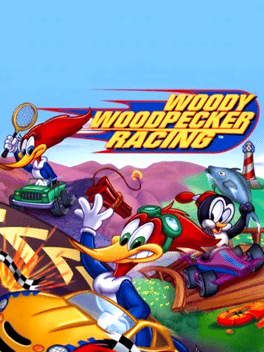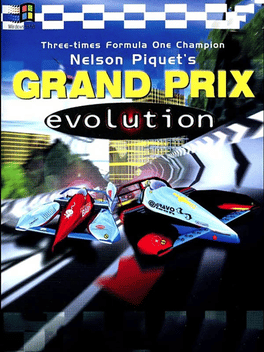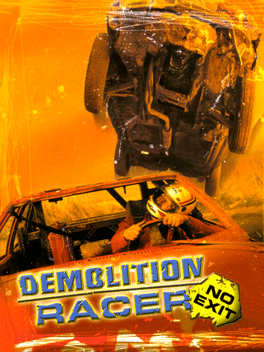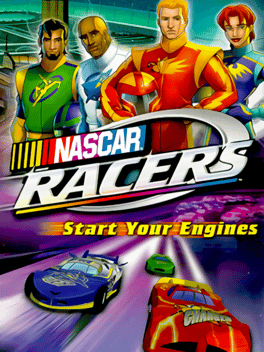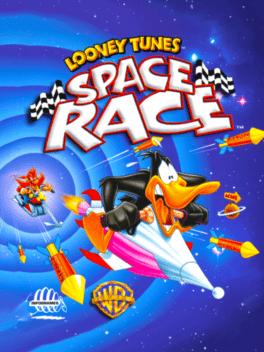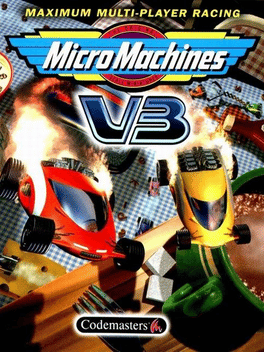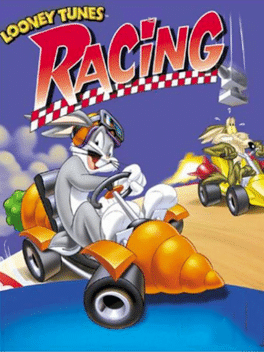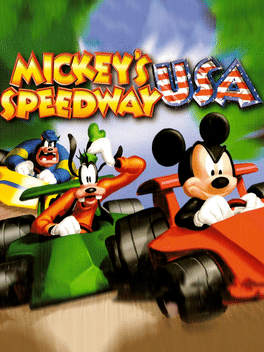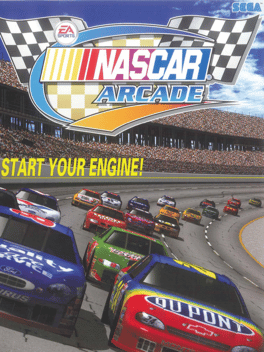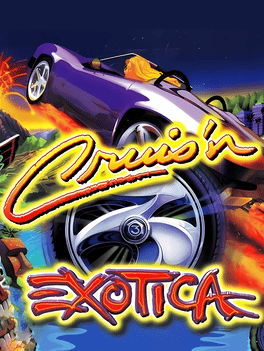New Racing Games - Page 111
-
The Dukes of Hazzard II: Daisy Dukes it Out
2000
In Dukes of Hazzard II: Daisy Dukes it Out, it will take a player's racing prowess and lead foot to make it through the pitfalls and troubles of this dusty country county. Players will control either the Duke boys in their high-powered General Lee or Daisy in her jeep as they sweep through the dirt roads and downtown of Hazzard. Levels alternate between the two vehicles, and the objectives you must complete are varied as well. You might find yourself outrunning the law or perhaps showing someone the sights in Hazzard. You might even deliver some mail, but eventually you'll get down to some good, old-fashioned crime fighting. -
Arthur! Ready to Race
2000
Arthur and his friends decide to enter a soapbox derby, and Arthur must go around his town doing tasks to acquire parts to his car. -
Moto Racer World Tour
2000
Moto Racer World Tour is the third part of the Moto Racer series for the PlayStation. The game offers you to race on 34 different bikes in both dirt and street bike category. Each bike's settings can be manually adjusted. The game features 18 real-life tracks. Besides normal races you can play a variety of different modes, such as obstacle course, drag race, freestyle race (where you have to perform tricks to score points) and Traffic Race (with normal traffic on the road). The game features two player multiplayer. -
Looney Tunes Racing
2000
-
Demolition Racer: No Exit
2000
The sequel to Demolition Racer. Race 14 tortuous tracks with mines and crates all over the place slowing you down, racing over 16 savage cars to a sports car to a hearse with its own characteristics to win the race. New game mode "last man standing" where you face all cars in race not for position, but to wreck each other going down a track to see who's last, and "demolition derby" where you fight cars in a arena to see who's last by hitting each other with state-of-the-art graphics where you can see tires, doors, hoods, bumpers, etc. go everywhere. -
NASCAR Racers
2000
-
NASCAR Racers
2000
NASCAR Racers
2000
Based on the Fox cartoon series of the same name, NASCAR RACERS is a glimpse of what NASCAR will be like in the future. You can choose from five different cars, each with its own abilities that increase during the course of the race including one car that becomes invincible and another that gains a huge burst of speed. After you choose the correct car for your driving style, hit one of the 20 tracks available in the game. While you're on the track, you need to keep an eye out for the oil slicks, water puddles, and random debris that will slow down or damage your car. If the car sustains too much damage, then the race is over, for you anyway. Luckily, there is a truck to refuel and repair your vehicle. Will you be able to cross the finish line in NASCAR RACERS? -
Looney Tunes: Space Race
2000
star 7.4Looney Tunes: Space Race features eight all-time favorite characters, including Bugs Bunny, Daffy Duck, Taz, Sylvester, Yosemite Sam, and Wile E. Coyote. The 12 tracks include shortcuts, jumps, and traps, and there are over 40 competitive events. Players can pummel opponents with gags like the portable hole, falling elephants, retractable boxing glove, and instant storm. Up to four players can race at a time. -
007 Racing
2000
007 Racing
2000
star 6.2In 007 Racing you can get behind the wheel of James Bond's car. You must complete missions which range from collecting an object and getting out alive, to much harder and more complicated things. Your car is armed with many weapons including mines, rockets, lasers, smokescreens, and more. Then, if you get bored playing alone, you can eliminate your opponent in multiplayer missions where you have to destroy the other car, or a game mode called "Pass the Bomb", where you must pass the bomb to the other car by touching it before you blow up. -
Driver 2: Back on the Streets
2000
star 6.1Driver 2: Back on the Streets is an open-world driving and action game developed by Reflections Interactive and published by Infogrames in 2000 for the PlayStation. It is the sequel to Driver and follows undercover cop Tanner and his partner Jones as they investigate a crime syndicate. The game introduces the ability for players to exit vehicles and explore environments on foot. Missions take place across four cities: Chicago, Havana, Las Vegas, and Rio de Janeiro. Gameplay combines story-driven objectives with free-roaming exploration. -
Micro Machines V3
2000
-
Looney Tunes Racing
2000
Looney Tunes Racing
2000
star 5.9Rev your engines - It's time to burn some Looney Tunes rubber! ACME Corporation, the corporate juggernaut behind such successful products as the Acme Disintegrator Gun and the Acme Portable Hole, is sponsoring a number of racing contests all over the universe for the Looney Tunes characters to compete for the looniest racing champion title. -
Mickey's Speedway USA
2000
star 6.5Buckle up and get ready to race! Rally across America with Mickey and friends! Race around 20 All-American courses - from Alaska to the Everglades - as you try to track down the Weasels and rescue poor dognapped Pluto. Use Ludwig Von Drake's wacky weapons - such as the "Antigrav-o-Kit Magno Flyer" or the "Stormy Weather Whenever Engager" - to give you the edge. Then blast past your friends and listen as the drivers taunt each other using Disney's original character voices! -
Action Man: Destruction X
2000
The master criminal Dr. X is up to his old tricks again! This time he has hatched a geo-strategic plan to steal valuable scientific secrets and take over the world! Only Action Man can stop him! Seek out Dr. X on a trail through three different cities around the world. Using a variety of vehicles in a combination of race, chase and rescue missions you must catch Dr. X before he triggers his weapons of mass destruction! -
NASCAR Arcade
2000
NASCAR Arcade
2000
NASCAR Arcade is a stock car racing game and the first NASCAR game to be made for the arcades. It's officially licensed through Electronic Arts (who had the license at the time) and is based on the 1999 Winston Cup series. There are three different race tracks to choose from each with a different difficulty level: Talladega Superspeedway, Richmond International Raceway and Watkins Glen International. A secret Team SEGA track exist too but it's not made available until 700 races have been made on the machine. Before racing the player can choose from real life cars and drivers that all have different strengths and weaknesses. The cars included are Pontiac Grand Prix, Ford Taurus, Chevrolet Monte Carlo and Pontiac Firebird while there are more than 30 drivers to choose from. The game can be played from a first person perspective or several different third person views. It's possible to choose automatic or manual transmission. The objective of the game is to race against the clock and reach a top three position and th -
Paris-Marseille Racing
2000
Take control of your DeLorian, police car, Mini or Beetle and race through some of France's most famous (and busiest) roads and cities. With tournament, time attack and single race modes, the game allows you to race within three classes, in each of which you must place first. Your reward is cash to upgrade the numerous cars available with enhanced engines, tires and even a nitro boost. Paris-Marseille is France's entry in Davilex's "Racer" series, alongside Autobahn Raser II in Germany, A2 Racer in Holland and London Racer in the UK. -
Cruis'n Exotica
2000
